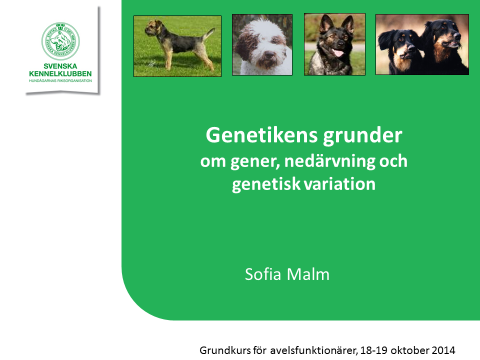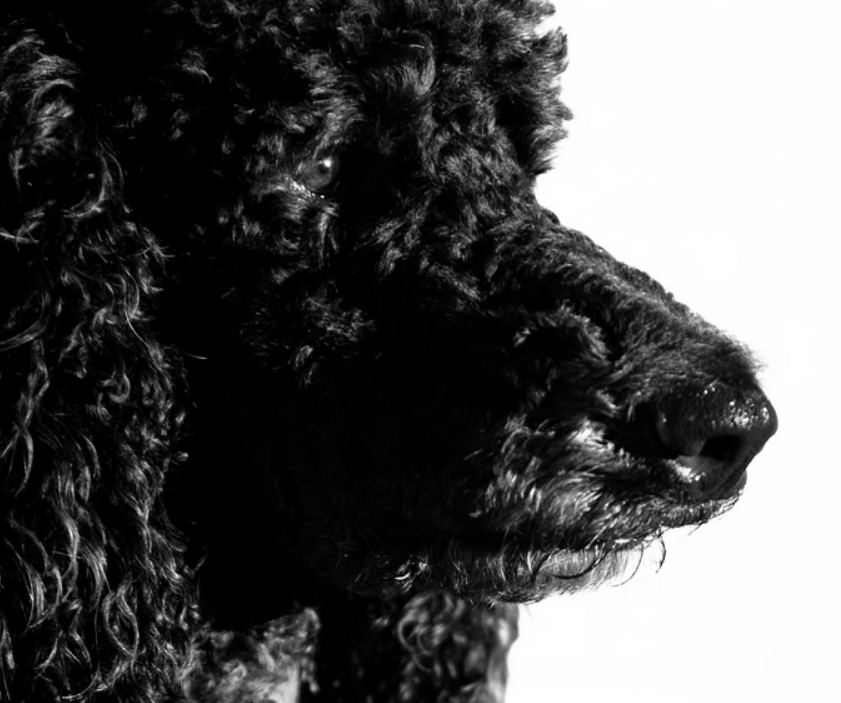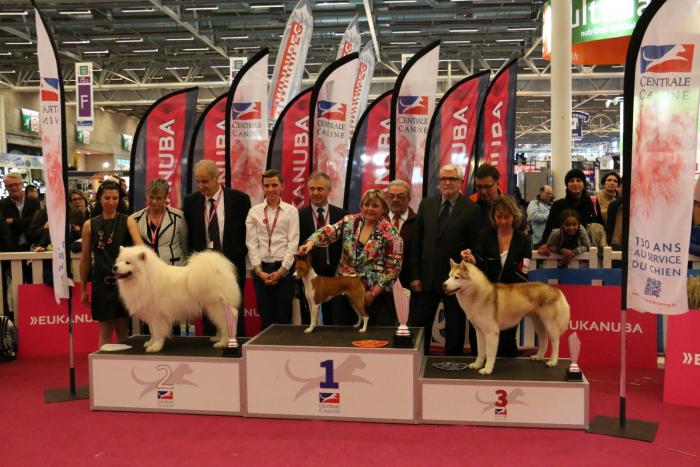Blogs
Featured Entries
-

COVID-19 - a novel experience for dogs and people
Sources of accurate and relevant COVID-19 information for your dog, your puppies and you. In the face of the great uncertainty surrounding COVID-19 and its impact on pets and pet owners, many veterinary and regulatory organizations have been providing excellent information and advice, as have kennel and breed organizations. It is important to remember that recommendations and restrictions vary depending on location and owners need to access and follow local recommendations, especially as t- 2 comments
- 6,074 views
Our community blogs
-

- 4
entries - 0
comments - 16260
views
Recent Entries
I was thrilled to receive an invitation last fall to deliver two workshop talks at the 2025 AKC Canine Health Foundation National Parent Club Canine Health Conference. This was the 30th year celebration for CHF, and the event did not disappoint. Dozens of keynote and workshop talks were provided to the more than 200 attendees from across the veterinary, research, and breed club spectrum. As a first-time attendee, I felt privileged to contribute to the event and introduce the International Partnership for Dogs and our resources on DogWellNet.com to this important North American audience.
There were many friendly faces present, including several of our previous International Dog Health Workshop speakers, our friends at the Orthopedic Foundation for Animals, and new friends at the AKC Canine Health Foundation. While the official theme may have been “Science for Health, Vibrant Dogs”, it felt like the unofficial theme was “Making Connections with Dedicated and Motivated Dog People”, who truly care about supporting science and research that is impactful and meaningful to dogs.

 The display table kindly furnished by CHF was extremely helpful in highlighting IPFD’s presence at the conference and served as a ‘home base’ for networking between the sessions. And congratulations to the winners of our draw for two bags of Silver Falls gourmet coffee, made in my home state of Oregon!
The display table kindly furnished by CHF was extremely helpful in highlighting IPFD’s presence at the conference and served as a ‘home base’ for networking between the sessions. And congratulations to the winners of our draw for two bags of Silver Falls gourmet coffee, made in my home state of Oregon!
All of the featured talks were provided by researchers that had received grant support from CHF and ran the spectrum of interests, including investigating specific diseases, veterinary care and techniques, parasites and non-inherited disease, and behavioral training.
The breakout sessions focused on audience-specific learning, and my presentations to both the veterinary and breeder streams had two goals:
1) To demonstrate the value of IPFD’s tools, resources, and broad international community
2) To highlight IPFD’s role as a leader in collaborative efforts to enhance dog health and well-being on both sides of the Atlantic and around the world.
I cannot thank the entire CHF team enough for their generosity and support in welcoming me and IPFD to the conference. I look forward to the next steps in strengthening our relationships with CHF and the North American dog community!- Read more...
-
- 0 comments
- 4
-

- 12
entries - 0
comments - 23416
views
Recent Entries
I attended the Fédération Cynologique Internationale (FCI) online conference on the illegal puppy trade on 4 February. The conference program included a slate of expert speakers who addressed various aspects of this important issue.
Educate the buyers – Without demand, there’s no supply
In their opening speeches, Dr. Tamás Jakkel (FCI President) and Jørgen Hindse (President of the FCI European Section) emphasised the need for cooperation between different stakeholders in this area. Dr. Jakkel also emphasised that the two most important steps in dog breeding are: 1) deciding which female and male should produce a litter together, and 2) finding the right homes for the puppies, as puppies in suitable homes rarely end up homeless.
Jørgen Hindse pointed out that only 14% of dogs in the EU are FCI registered pedigree dogs, and yet FCI breeders are most often blamed for animal welfare problems.
Hindse stressed that it is important for the puppy buyer to see the mother and the conditions in which the puppies are reared. This is not possible in puppy mills. He welcomed the new EU law requiring all dogs to have identification and concluded that the key to eliminating puppy mills is to educate puppy buyers. Without demand, there's no supply.
Four Paws calls for three important EU actions
Nick Weston (Head of International Campaigns, FOUR PAWS) gave an overview of the illegal puppy trade in the EU. Among the points he highlighted:
- There is an annual demand for 5.99 million puppies.
- The value of the annual dog trade is 4.6 billion euros.
- 79% of dogs come from unknown or illegal sources.
- 2000 new advertisements for dogs are placed daily on classifieds websites.
- Traceability of sellers is weak.
- In 2021, the EU recognised the illegal puppy trade as organised crime.
These figures are taken from FOUR PAWS's excellent report, 'Billion Euro Industry - Why the EU must strengthen regulations to end the illegal puppy trade now'. The 50-page report includes nine supporting documents. It is the most comprehensive look at the puppy trade currently available.
Weston said no one is safe from illegal puppy traders. Most people don't know about the poor welfare conditions in this business – or they do know, but they want to rescue/save the puppy. It is a perfect business model for the criminals: people will buy anyway. This is high-risk consumer behaviour: people want to buy a puppy NOW, no matter the consequences.
Harmonised legislation is needed to tackle the illegal trade in the EU. FOUR PAWS is calling for three actions:
- Mandatory identification and registration of all dogs and cats
- Classified ad sites to use a registration verification system for puppy ads (Veripet)
- Improved interoperability of databases so that every dog in the EU can be traced throughout its life.
These actions should also be extended to social media groups. Four Paws has met with Meta, which is taking this issue seriously.
What everyone can do:
- Contact the AGRI Committee (via FOUR PAWS: Regulate the EU Puppy Trade Now)
- Raise awareness: inform your members, inform the media
- Encourage your MEPs to vote – dog and cat welfare legislation will be voted on this summer.
Three presentations on welfare issues and health risks
The presentations on welfare issues and health risks included:
- Dr. Gabriella Markus (Veterinarians for Animal Welfare Foundation, The Bojtár Association – Animal Guardian Legal Aid Helpline): Welfare issues and struggles in the “producing” countries,
- Dr. Lilla Balatonyi (clinical veterinarian): Health risks of being born on a puppy farm, and
- Dr. Ágnes Sátori (veterinary behaviourist): Future behavioural problems of puppies coming from illegal trade.
All three presentations were very thought provoking, and they underscored the need to stop the illegal puppy mills immediately…to end all the suffering they cause. In puppy mills, there's no expertise, no genetic testing, no vaccinations/antiparasitics or other treatments, and no love for the animals. And there are also many ‘rescue’ organisations and shelters that are in fact, puppy mills.
Some of the things that stuck in my mind from these three presentations:
-
Suffering of the bitches
- Puppy mill bitches don't know human touch – they are only touched twice a year when they are mated. They have a general fear of people. They don't go for walks, don't get to see and feel the sun, don't hear normal environmental sounds like birds and other animals.
- They must live with constant environmental noise and fear, so their stress levels are high. They have a litter every six months and are abandoned as soon as they are no longer needed.
- The size of the male is not considered in matings, so the puppies are often too large to be born naturally. Signs of botched caesareans and non-veterinary episiotomies are common, and these often kill the mother and sometimes the puppies too.
- Debarking is common, to make the dogs silent.
-
Many health problems from poor nutrition
- Both bitches and puppies are in poor condition due to poor nutrition and environment. As a result, the mother's milk does not contain antibodies against the major pathogens. Puppies have parasites and viral diseases, and because they are not vaccinated even against rabies, they pose a risk to humans. Misuse of antibiotics is wide – to mask infections at the time of sale.
- Poor maternal nutrition leads to impaired foetal gastrointestinal development, which results in puppies having problems absorbing nutrients. Poor nutrition also causes microbiome dysbiosis, which results in chronic diarrhoea and other gastrointestinal problems.
- Poor nutrition causes also underdevelopment of the nervous system and brain biochemistry. This results in defective production of hormones, such as serotonin, so puppies cannot control their emotions, for instance.
-
Behavioural problems and genetic diseases
- Many behavioural problems are the result of poor conditions/nutrition and epigenetic mechanisms.
- In addition, puppies are born with genetic diseases such as hydrocephalus, blindness, deafness, and patellar luxation. This is due to the breeders’ lack of knowledge or ignorance of genetic problems.
-
Puppy mills in Hungary
- Dr Gabriella Markus described the puppy mills in Hungary, where puppy farming has a long tradition. It's considered, by some, better for people to earn money this way than to do nothing and be on welfare.
- The dogs are fed twice a day and that's about all the care they get. The food is of poor quality, unsuitable for dogs and normal puppy development. The primary reason for this poor care is a lack of knowledge.
- There is a licensing system for breeders, but it’s useless for monitoring animal welfare because registering is as easy as opening an account on eBay.
- The police have no money to investigate suspected animal cruelty so that the criminals can be convicted. Only the victims can appeal the cases, but the victim in this case is an animal...
- It is so easy to run an illegal puppy mill in Hungary that people move their business there if they are caught in their own country.
-
Buyers want puppies as young as possible
- Pet shops and buyers want puppies as young as possible. However, the rabies vaccine cannot be given until the puppy is 12 weeks old, so documents are falsified.
- Some veterinarians rubber-stamp vaccination certificates, which puppy mill owners fill in with other information – and the puppy remains unvaccinated. Outbreaks of rabies have occurred in Romania, Poland, and Hungary in recent years, so this is a real threat to humans.
- A new trend to circumvent the rules is to search for 1- to 6-year-old bitches in secret Whatsapp and other social media groups. The bitches are mated and transported pregnant into puppy mills, under non-commercial transport status. The resulting puppies are untraceable.
The objectives of the EU to tackle the illegal dog trade
Lucie Carrouée (DG SANTE, Deputy Head of Unit, Unit G3 – Animal welfare) and Alicja Muznik (Policy officer, DG SANTE, Unit G5 – Food hygiene, feed and fraud) talked about ‘The objectives of the EU to tackle the illegal dog trade’.
Lucie Carrouée and Alicja Muznik work in the Commission's Health and Food Safety department, which is responsible for EU policy on food safety and health and for monitoring the implementation of related legislation. They highlighted several challenges, such as
- Commercial activities disguised as non-commercial
- Falsified vaccination documents
- Animals from Russia and Belarus sold as EU pets to unknown recipients in the EU using Polish, Latvian, and Estonian transporters
- Falsified EU pet passports
- Illegal breeding and import of animals by Romanian associations
The EU is tackling these activities with tools such as direct contact points for the pet trade, regular task force meetings and information exchange, and the involvement of police and prosecutors.
A traceability infrastructure has been planned for the proposed EU legislation on the welfare of dogs and cats, including interoperability between national databases and a verification system for dog and cat advertisements.
Sellers will have to provide specific information in advertisements, such as the sex, date of birth, country of birth, and breed of the animal in question. They will also have to provide the buyer with information on responsible ownership and a link to the verification system where the buyer can check the identification and registration of the puppy.
FCI survey on cultural differences and human tendencies affecting the illegal puppy trade
The last talk was, ‘Cultural differences and human tendencies affecting the illegal puppy trade based on the FCI Survey’, given by Attila Márton (FCI PR Advisor, member of the FCI Health & Welfare Committee). The talk included interesting results of the FCI survey, which will be published soon.
Video recordings of the talks
FCI has begun posting videos of the talks - available here.
My Closing Thoughts – Opportunities for Collaboration
I wholeheartedly agree with Dr. Jakkel on the need for cooperation in ending the illegal puppy trade. And it’s important to note that this issue extends far beyond the EU – into North America and elsewhere around the world.
IPFD and decision-makers from the global dog community have been addressing the issue of supply and demand within a recurring theme at our International Dog Health Workshops (IDHWs). Below are links to related materials from the 5th IDHW, held last year in Helsinki:
I would encourage FCI and FOUR PAWS – and all organisations and leaders who recognise the importance and power of international collaboration – to take part in IPFD’s ongoing discussions and make plans to join us at our 6th IDHW in Bologna, Italy, in the spring of 2026.
We’re always available and ready to discuss collaborative solutions to issues that affect canine health and well-being. We welcome you to connect with us at katariina.maki@ipfdogs.com or info@ipfdogs.com.
- Read more...
-
- 0 comments
- 12
-

Helle Friis Proschowsky, from the Department of Veterinary and Animal Sciences at Copenhagen University, has just published a Horizon Topic paper with Maja Arendt, Brenda Bonnett, Camilla Bruun, Irena Czycholl, Merete Fredholm, Dan O'Neill, James Serpell, and Peter Sandøe. The title of the paper is "A new future for dog breeding".
The paper presents a review of modern dog breeding, outlining the current situation and suggesting improvements to enhance the health and welfare of dogs in the future. The authors view this paper as a call to action, providing a framework for driving meaningful change.
Overview of the Current Situation
The authors begin with an overview of the current situation: The modern idea of purebred dogs has come under increasing critical scrutiny in recent decades. In light of this critical focus and other developments in society, new trends in how companion dogs are bred and acquired have emerged. This means a diminishing influence from traditional kennel clubs – with more dogs being sold without a pedigree, stricter legal restrictions on dog breeding, growing popularity of deliberate crosses of established breeds (i.e., so-called 'designer breeds'), and growing hype around the benefits of mixed-breed dogs.
They then provide an overview of these trends and discuss the extent to which they will facilitate the promotion of dogs that are innately healthy, enjoy good welfare, and function well in their various roles in today's world.
The authors contend that newly created designer breeds and mixed breeds also exhibit concerning health and behavioural issues. They posit that the predictability of purebred dogs with respect to body size, fundamental behaviours, known grooming requirements, disorder profiles, and other attributes may confer benefits for a mutually satisfying human-dog relationship.
What Would Be the Solutions?
The optimal future seems to lie in the middle ground, the authors state. The future organised dog world (i.e., kennel and breed clubs or their successor organisations) will need to:
- re-open the breed registries
- remove wording from breed standards that currently promotes extreme conformation
- support selection against disease-predisposing genotypes and phenotypes, and
- refocus dog showing and breeding to promote health and appropriate behaviour
IPFD 5th International Dog Health Workshop Discussed These Same Issues
 Discussions on this subject also took place at IPFD’s 5th International Dog Health Workshop in June 2024. There was widespread agreement on moving away from extreme conformation and inbreeding, and towards accepting crossbreeding as a legitimate tool for breeders – as well as towards following scientific evidence on canine genetics and health. It was agreed that these principles should become priorities for welfare-minded organisations at the national and international levels.
Discussions on this subject also took place at IPFD’s 5th International Dog Health Workshop in June 2024. There was widespread agreement on moving away from extreme conformation and inbreeding, and towards accepting crossbreeding as a legitimate tool for breeders – as well as towards following scientific evidence on canine genetics and health. It was agreed that these principles should become priorities for welfare-minded organisations at the national and international levels.
A better education of puppy buyers, breeders, show judges, and other stakeholders was identified as a recurring priority across all four workshop themes.
Read the Horizon Paper
View/Download the Horizon Paper Here
- Read more...
-
- 0 comments
-

- 9
entries - 10
comments - 17804
views
Recent Entries
Closed populations and the pursuit of exaggerated traits predispose dog breeds to health and behavioural problems. What should be done in this situation to ensure that pedigree dog breeding can continue in the future and that the reputation of pedigree dogs is enhanced? Some countries have gone the way of breed bans, but in Finland the solutions are different. The Finnish Kennel Club's (FKC) webinar on 21 November 2024 explored what these solutions might mean in practice.
The webinar was open to everyone, and the panel included Kirsi Sainio (PhD, Associate Professor of Developmental Biology, Chair of the FKC Breeding Committee), Vilma Reunanen (Licentiate in Veterinary Medicine, Veterinary Specialist), and Liisa Lilja-Maula (DVM, Associate Professor of Veterinary Medicine).
Kirsi Sainio hoped legislation would help, but too much regulation is not good
The webinar started with a presentation by Kirsi Sainio (also a member of IPFD's distinguished Board), who shared some statistics about the number of dogs and dog breeds in different parts of the world. Most dogs in the world are not pedigree dogs. The FCI, the umbrella organisation of the FKC and other member countries' national clubs, has published statistics on the percentage of FCI registered dogs in different countries, and Finland has the highest percentage in Europe (64% in 2022).
Sainio also went through the dog-related legislation in Finland and gave an overview of the upcoming EU legislation. Finland's current Animal Welfare Act came into force on 1.1.2023. The content of the Act reflects the desire of Finnish society to take preventive care of the welfare of dogs and other animals, rather than just protecting them from suffering. Members of the FKC have also called for the FKC to take more action to improve the welfare of dogs and reduce the incidence of hereditary diseases.
 A Contributing Partner of the International Partnership for Dogs, The Finnish Kennel Club (Finnish site) (English site) has approximately 130,000 members, and its breeding database, which is open to all, contains information on approximately 1.5 million dogs. The FKC has a large number of disease tests for breeding purposes, perhaps the most in the world. The number of disease tests carried out each year is increasing, and the FKC, with the help of vets, has recently developed many new tests, the most recent being a screening test for shoulder osteochondrosis and a test for elbow incongruency in short-legged dogs.
A Contributing Partner of the International Partnership for Dogs, The Finnish Kennel Club (Finnish site) (English site) has approximately 130,000 members, and its breeding database, which is open to all, contains information on approximately 1.5 million dogs. The FKC has a large number of disease tests for breeding purposes, perhaps the most in the world. The number of disease tests carried out each year is increasing, and the FKC, with the help of vets, has recently developed many new tests, the most recent being a screening test for shoulder osteochondrosis and a test for elbow incongruency in short-legged dogs.
The new Animal Welfare Act in Finland has also introduced an obligation for veterinarians to notify the authorities of hereditary defects and diseases that exclude dogs from breeding. The information will be collected in an official dog register and will be made public. This raises a number of questions, according to Sainio. For example: Which diseases are covered by the obligation to report? Are all diseases and defects equal? Can the information on dogs be transferred to the FKC's breeding database? Will the obligation to report result in dogs being left untreated or treated abroad?
The FKC fears that dog breeding could spiral out of control if regulation is perceived as too restrictive. There is already evidence of an increase in unregulated breeding and puppy mills of small companion dogs. Swedish Customs has reported a record number of smuggled dogs. The phenomenon can be seen throughout Europe.
Sainio asked what to do next. Can unhealthy breeds be changed? "Yes, they can," she replied. Do we need to change these breeds? "Yes, we do.". The health and welfare of the dogs really needs to be a priority in breeding. Change requires cooperation and a positive attitude from all parties. Blaming will not help anyone.
Vilma Reunanen went through the exaggerated characteristics of dogs and the health problems they cause
The next part of the webinar was a presentation by Vilma Reunanen on exaggerated traits in dogs. Reunanen began by saying that every dog deserves a normal physical structure and a healthy mind. A dog should be able to live a species-typical, effortless, and painless life.
Reunanen went through several exaggerated features of dogs and asked if we are perhaps used to unhealthy structures. The many exaggerations of canine anatomy and their consequences for the welfare of dogs can be seen in veterinary practices. Exaggerated, unhealthy structures can be seen in the dog's spine, limbs, head shape, and size.
According to Reunanen, one of the things that can be considered excessive is the overuse of popular males in breeding, which leads to inbreeding and the spread of disease genes.
Too much is also too much when it comes to the temperament of the dogs," says Reunanen. Some dogs have been bred to be too lively and restless, while others have been bred to be too soft and sensitive. Many breeds have a lot of dogs that cannot cope with everyday life, dogs that are very fearful.
Reunanen herself prefers pedigree dogs because of their predictability. However, breeders and show judges have to admit that some breeds have unhealthy traits, and most breeds have hereditary diseases that need to be tackled more vigorously. Only by recognising this can we breed healthier dogs.
Final debate called for more effective action to promote dog health
At the end of the webinar, Sainio, Reunanen and Lilja-Maula answered questions from the audience and discussed dog health and ways to make health a priority in breeding.
They pointed out that many breeds have changed a lot since the breed standards were written. Breeding should aim at the original type and structure of the breed, from which there has been a sometimes very unhealthy divergence over the years.
Furthermore, the panelists pointed out that each country can influence the breeding and development of its own breeds, whereas breeds "owned" by other countries are more difficult to influence. Finland is responsible for guiding the breeding of its national breeds and setting their breed standards. Its national breeds, the Finnish Spitz, Karelian Beard, Finnish Hound, Finnish Lapponian Dog, and Lapponian Herder have fortunately remained original in their structure and working qualities, and have not developed any extreme traits.
According to Sainio, Finland is on the right track, but some things are stagnating. She stated there should be more action, and health should really be the number one priority in breeding. She hopes that legislation will provide the impetus for action.
Fortunately, the Finnish legislature has its feet on the ground, and it seems that no breeding bans, for example, are on the way. A breeding regulation under the Animal Welfare Act is currently awaited to deal with hereditary diseases and extreme traits.
Finland is perhaps the country with the highest number of screened dogs in the world
The Finnish Animal Welfare Act stipulates that a breeding dog must be healthy and well. Kirsi Sainio pointed out that disease screening is an important tool for breeding healthier dogs. As scientific research provides more information about breed-specific hereditary diseases, the veterinary profession will also develop new screening tests.
In Finland, dog owners and breed clubs have been very active in participating in various research studies. Many breeds have been involved in studies of hereditary diseases, which has led to the development of tests for these diseases.
Liisa Lilja-Maula pointed out that the results of screening tests must be used effectively. X-rays alone will not improve hip health in dogs, but the results must be used systematically in the selection of breeding dogs.
Making health and well-being a priority in breeding
The panelists agreed that the health and well-being of dogs should be a priority in dog ownership and breeding, and that this should not be a source of confrontation among stakeholders. All stakeholders must play their part in maintaining and promoting this.
It is in the dog's interest to perform well in the task for which it has been bred. A physically and mentally healthy dog is best able to do this.
- Read more...
-
- 0 comments
- 9
-

My First IDHW – Well Worth the Wait!
As the CEO of the International Partnership for Dogs (IPFD), I had the privilege of attending my first International Dog Health Workshop (IDHW), co-hosted by the Finnish Kennel Club in Helsinki, this past June. Having been with IPFD for just over 18 months, I consider this workshop a significant milestone – for me personally and for our organization – as it showcased our accomplishments and growth since the previous IDHW in 2019 (co-hosted by The Kennel Club in Windsor, UK), despite the challenges of the COVID-19 pandemic.The workshop was an incredible opportunity to meet many key contributors to IPFD's success over the past decade. Putting faces to names and engaging with these dedicated individuals in person was profoundly inspiring.
Honouring Prominent Contributors

 The Friday night Gala Dinner gave us an opportunity to acknowledge several individuals who have made exceptional contributions to IPFD and the global dog community.
The Friday night Gala Dinner gave us an opportunity to acknowledge several individuals who have made exceptional contributions to IPFD and the global dog community.
It was exciting to witness the introduction of the Brenda N. Bonnett Canine Excellence Award and presentations for our first two recipients: Brenda (who was unable to attend due to health issues) and Åke Hedhammar, a long-time champion of canine health and international collaboration (and who was instrumental in the development of the IDHWs a decade ago!).
I was also delighted to see our very own IPFD Chair, Pekka Olson, recognized as one of the distinguished recipients of the Pro Cane Sano Medal of Merit, presented by the Finnish Kennel Club – a well-deserved honour!
For many of us in attendance, the awards ceremony served as a wonderful symbolic conclusion to the first 10 years of IPFD’s journey and an emotional call to action for all of us working to improve canine health, welfare, and well-being into the decade ahead.
Breakout Sessions: My Observations and Impressions
 It was very encouraging to feel the amazing energy and hear such positive and forward-looking discussions in the breakout sessions rooms! Below, I share some of my notes from the breakout sessions and summary sessions that followed.
It was very encouraging to feel the amazing energy and hear such positive and forward-looking discussions in the breakout sessions rooms! Below, I share some of my notes from the breakout sessions and summary sessions that followed.
Supply and Demand
Attendees suggested the need for regular virtual meetings, with IPFD playing a key role in hosting these sessions. This will ensure continuous collaboration and sharing of ideas among stakeholders.Breeding for Health and Well-Being
The attendees in the room were aligned with the following thoughts. Despite the world's diverse legislation, cultures, and societies, dogs remain consistent and universal in their nature and needs. It's imperative to prioritize the well-being and lives of dogs, embodying the essence of being "KOIRAIHMISIÄ" or "dog people", as written on the wall of the library in Helsinki.The proposed solutions focus on better education and understanding within the community, leveraging facts and scientific studies. Compliance with existing laws is crucial, especially considering breeds that currently cannot be bred under present conditions.
Necessary changes should be made to breeds in need or at risk, which requires consensus on the necessity and approach to these changes. Action points include engaging in ongoing discussions to identify and agree on solutions for the challenges faced, promoting scientific knowledge to enhance community awareness and education, evaluating and adapting breeding practices, and fostering agreement on the need for and methods of making necessary changes to certain breeds.
Big Data
Participants discussed maintaining a dedicated webpage on DogWellNet.com to collect and annotate scientific papers on specific topics. This resource would include lay summary paragraphs, providing accessible scientific proof that supports various breeding tools, such as Estimated Breeding Values (EBVs). This page would serve as a valuable resource for breeders, offering them scientific backing for their decisions.Additionally, participants suggested the creation of an online resource, resembling IPFD’s Genetic Testing Providers (GTP) database, that would list the major datasets held by various stakeholders. For example, the UK Kennel Club's phenotype information on hips, eyes, and elbows, as well as genome-wide data from genetic testing, could be included. This information would be of great interest to owners, breeders, researchers, and others in the Big Data field.
There was also a proposal to create an EBV Working Group, like the brachycephalic working group formed after the Windsor workshop. This group would investigate the current use of EBVs in dogs, how they could be more effectively utilized, and how to educate breeders on EBVs through short videos.
Does the Color Matter?
Attendees suggested a series of webinars to be made available worldwide through DogWellNet.com, covering the history of breeding and experiences with crossbreeding, including best practices and common pitfalls. Moving towards the harmonization of crossbreeding rules was a key topic.Barbara Thiel (IPFD Board Member, Germany) will send out a questionnaire to representatives from various countries to gather information on their crossbreeding rules, which will then be summarized and published on DogWellNet.com.
The UK Kennel Club was encouraged to explore the possibility of an International Cross Breed Project display at Crufts and consider an International Canine Health Award for crossbreeding projects.
Workshop Outcomes and Future Directions
The discussions and suggestions from the workshop will set the stage for IPFD's second decade. We’re now taking the initial steps to turn these excellent ideas into tangible international actions. Stay tuned for updates!The enthusiasm and collaborative spirit displayed at the workshop underscore the importance of our mission and the impact we can achieve together. I’m excited about the future of IPFD and look forward to working with all our partners and stakeholders to advance dog health and well-being. Let's take the momentum from this workshop and move forward with renewed energy and commitment to our shared goals.
So Many to Thank…
Thank you to our sponsors, Mars Petcare, Royal Canin, and Agria; our exhibitors, CombiBreed, Wisdom Panel, and Royal Canin; and all the poster presenters, discussion leaders, note takers, and the IPFD consulting team. And thank you to our Board of Directors for their leadership and commitment to ensuring IPFD’s signature events – the IDHWs – continue. Also, thank you to the Finnish Kennel Club and everyone who attended and contributed to the success of the International Dog Health Workshop 2024.I know that together, we’ll continue to affect positive change in the world of dogs. Watch for announcements on our plans for 2025 and 2026 this fall. Enjoy your summer!
Warm regards,
Marc Ralsky
CEO, International Partnership for Dogs (IPFD)- Read more...
-
- 0 comments
-

 This week is the anniversary of the First International Conference on Human Behaviour Change for Animal Welfare that took place in the UK 2016. All the talks are on their YouTube channel.
This week is the anniversary of the First International Conference on Human Behaviour Change for Animal Welfare that took place in the UK 2016. All the talks are on their YouTube channel.
See our article following the Conference.
I was honoured to give a presentation - and in that process to learn about the knowledge, methodology, and tools available from human behaviour change theory and practice to help us.
My talk is posted on the HBC's YouTube channel under the title: How Beliefs and Attitudes about Dog Health and Welfare Limit Behaviour Change.
In fact, the entire title was:
Don't Know or Don't Care? How Beliefs and Attitudes about Dog Health and Welfare Limit Behaviour Change.
See the Video Presentation and article/PDF presentation HERE
and the video (below) is also available on YouTube...
I am in general not a fan of watching videos of myself. But this is a good talk - helped by the fact it was prescribed to be only 15 minutes long!
However, reviewing this talk I was struck by something that was equally positive and extremely disappointing.
The material in this talk is as relevant today as it was 4 years ago.
Perhaps even more so. We are coming out with more material this week on challenges around brachycephalic dogs that will highlight the pros and cons of legislative actions, the diversity in opinions, even from those within the world of pedigree dogs, from total denial to intense concern. There will be more talk about complexity, and the role of various stakeholders , e.g. veterinarians -- are they really doing all they can?
I know that 4 years is not very long in terms of change for people or dogs. But we have also recently completed a chapter for an upcoming textbook and that work highlighted that problems in flat-faced dogs have been discussed at least since the late 1960's. So that is not 4 years, it is over 50 years. There has been a phenomenal increase in evidence for the prevalence and high risk of health issues, many of which incur welfare concerns, in the worst affected breeds. This has intensified in the last 10 years as the popularity of these breeds has increased, and then skyrocketed (see our Get a GRIHP! article on French Bulldogs). There have been many creative attempts to educate the public, and research to understand attachment to these dogs.
Given all that.. I am sadly concerned that:
- There may still be some 'Don't Know' people out there... and we can continue trying to reach them.
- But, unfortunately there are some people, some very loud on social media, some in positions of influence in the dog world, who are displaying behaviour that comes across as 'Don't Care'.
- At least it seems that they don't care ENOUGH about the dogs to be willing to undertake the human behaviour change needed to sustain a healthy future for the breeds they 'love'.
We have to find a way to help people understand that admitting there are problems is the first step towards resolving them.
- Read more...
-
- 0 comments
-

- 6
entries - 3
comments - 16840
views
Recent Entries
Working together: dog breeders, researchers, veterinarians, and kennel clubs have developed a truly international screening scheme for respiratory function.
UPDATE: 5/25/2023
The OFA - just published info on participating in the Respiratory Function Grading Scheme - see their Overview at https://ofa.org/diseases/rfgs/ - includes an event planning guide and instructions/rfgs forms.
On 20 January 2023, I had the privilege of attending the Rose City Classic Dog Show, which included the North American launch of the Respiratory Function Grading Scheme (RFGS), colloquially known as the Cambridge BOAS scheme. The Orthopedic Foundation for Animals (OFA) is licensed by The Kennel Club in the UK, to administer the scheme and train new assessors. The scheme is currently offered formally to the British Bulldog, Pug, and French Bulldog, but other brachycephalic breeds are able to participate. Participation is quick, easy, and painless for the dog.
This scheme is many years in the making, and is an excellent example of collaboration between dog breeders, researchers, and kennel clubs working together to make steps towards addressing a complex and challenging health condition. Owners who participate in the scheme benefit from immediate information on key areas associated with risk of brachycephalic obstructive airway syndrome (BOAS) for their dog, as well as information for selecting breeding stock. They also directly contribute to a growing body of international data that supports genetic and veterinary researchers work to improve risk assessments.
Basic Steps of the Scheme:
1. Owners fill in a short survey
2. A brief physical examination of the dog, while calm, to establish a baseline
3. Dog has a brisk 3-minute walk (not running)
4. A post-walk assessment to compare to the baseline
5. Dogs are given a grade 0-3, with 0 being lowest risk and 3 being highest. Data is recorded, and in many cases available to view online.Above: The dog is assessed in a quiet and relaxing space, with their owner. The specially trained assessors, all veterinarians, look at the nares (nostrils) and listen to the dog breathing.

Above: The screening session is recorded, along with data on the breathing. Standardized scoring cards are used to assess the nares.
Not pictured: Dogs undergo a timed 3-minute walk around a standard show ring. Dogs are not encouraged to run, but simply to walk at a reasonable, quick pace.
During my visit, I watched several dogs undergo the assessment. Speaking to the owners, the most common reasons they wanted to participate was to demonstrate that using the scheme was the right thing to do for the breed, to help grow awareness and use of the scheme, and as part of pre-breeding assessments. The assessors on the day had a steady stream of French Bulldogs, English Bulldogs, Pugs, and some Boston Terriers. While at the moment the screening scheme is designed for French Bulldogs, English Bulldogs, and Pugs, other brachycephalic breeds can utilize the scheme, gaining valuable information and contributing to research. I witnessed many owners who had dogs scoring Grades 0-1 (the lowest risks), both in young and older dogs.
It will take time to track how use of this scheme reduces the risk of BOAS in future generations of dogs, but at the very least the consistency in the data collection and the ability to identify higher-lower risk dogs to breeders is valuable and an important resource to brachycephalic breeds.
Accessing the RFGS screening scheme
The scheme is available in the UK, and USA. The Federation Cynologique Internationale (FCI) also supports this screening scheme. Currently there are 11 countries currently offering the scheme: Australia, Denmark, Mexico, Netherlands, New Zealand, Portugal, Sweden, Switzerland. 8 more countries are in process for 2023.
More information on the scheme:
UK: The Kennel Club and University of Cambridge's Respiratory Function Grading Scheme
FCI Countries: Brachycephalic breeds' health: agreement between the Kennel Club (UK) and the FCI
North America:
The Kennel Club grading scheme details:
FrenchbulldogandbulldoggradingschemeKC.pdf
The views and opinions expressed by the authors and those providing information or comments on this website are theirs alone, and do not necessarily reflect the views, opinions or positions of the International Partnership for Dogs (IPFD) or DogWellNet.com.
We make no representations as to accuracy, completeness, timeliness, suitability or validity of any information and will not be liable for any errors, omissions, or delays in this information or any losses, injuries or damages arising from its display or use.- Read more...
-
- 0 comments
- 6
-

- 18
entries - 1
comment - 28919
views
Recent Entries
An outcome from the International Dog Health Workshop - Virtual, on Standardizing Genetic Testing, is to improve transparency on how genetic tests are performed - e.g. information on assays or other technical details. The primary focus of this was increasing transparency on where a linkage vs direct variant (mutation) test is being offered.
New HGTD Phenes resource:
The phenes searchable database in HGTD has always provided genetic test provider (GTP)-specific information on how tests are undertaken, including the specific GTP-reported variants/mutations for each test they offer, especially where their test is different than the variants reported in the literature.
The new option to include Assay/Test Information in the phenes database allows for comment not just specific to individual GTPs, and aims to add clarity where a test is exclusively linkage based, exclusively direct variant, or both. This should also improve transparency where we have reports of tests being performed as a linkage/markers tests by GTPs who are not participants in HGTD or who do not provide linkage/markers information to HGTD.
Why would a linkage test be offered?
A linkage or markers test may be the preferred test performance for a GTP for a number of reasons, including:
- The direct variant(s) are difficult to assay or are part of a panel, and a linkage/markers assay is easier to perform consistently and robustly
- The direct variant isn't known, and only a linkage/marker is available to test
- The direct variant is patented or proprietary, and a linkage test is a way around this
Why is it important to know if a test is a direct mutation or linkage test?
While linkage tests are usually very accurate, generally, direct mutation tests are felt to be more robust so are often the preferred method of test performance by GTPs. Where a linkage test is used (for whatever reason), there may be an increased risk of false-results. This could explain why some owners have experienced different test results for the same genetic test, from different test providers. Knowing whether or not a test is performed as a direct mutation or as a linkage test can be helpful in increasing the confidence of a test result if there are concerns about accuracy. There can be many reasons a test result may appear to differ from the phenotype of a dog, however, so it is valuable to report to a genetic test provider when a test result is in question. It could be a testing error (including owner sampling errors), or that the phenotype is an unknown direct variant, variation on a known direct variant, or something else! In this way, we can work collaboratively to improve the robustness of genetic testing for everyone. It is worth noting that the majority of testing errors across all kinds of genetic tests are due to samples being incorrectly taken or submitted with the wrong dog details, which is why many GTPs offer to re-run a test where there are concerns about the result.
Additional Information:
This week in HGTD: direct variant/mutation, linkage, and risk tests – what are they?
- Read more...
-
- 0 comments
- 18
-

- 23
entries - 18
comments - 137129
views
Recent Entries
National Kennel Clubs are major stakeholders in the governance and regulation of dog breeding. As such, they have been the targets of major criticism related to dog health issues. It is therefore interesting to investigate to what extent health and welfare is a priority for kennel clubs (KCs), and what are the capacities and actions implemented to deal with those issues.
A survey was sent in 2017 to 40 KCs with 15 answers received from 11 European (Austria, Belgium, Denmark, France, Germany, Ireland, Latvia, The Netherlands, Norway, Sweden and the UK) and 4 non-European countries (Australia, Mexico, Uruguay, and the USA) aimed at describing and comparing information across countries in dog breed health management (Wang et al. 2018).
First, in order to determine the population of dogs under the responsibility of KC, the percentages of all dogs being registered as ‘pedigree’ dogs were estimated considering the 15 surveyed KCs, as well 35 other countries, using sources such as the FCI online statistics. Across countries, the average and median percentage of the entire dog population that were registered pedigree dogs, respectively was 20% and 14%. However, there was a large variation across countries, with European Nordic countries showing, in general, a larger proportion of pedigree dogs (see Figure 1). This aspect is of importance, since it is expected that the responsibility toward general dog health, as well as the capacity to improve the situation, relates to the proportion of dogs that are at least to some extent under the influence of the KCs.

When asked about the current challenges, KCs ranked exaggerated morphological features and inherited disorders as the most important issues, showing those two problems are now clearly identified as priorities (Figure 2). By contrast, issues such as economic constraints to breeding were rarely viewed as problematic for dog breeding. Kennel clubs also commented on challenges related to the difficulty to find balance between increased regulation and the risk of losing members; to achieve consensus and compliance of breeders and clubs toward breed health strategies; as well as lack of capacity regarding information provision and education.

Surveyed countries showed great diversity in terms of information management, implementation of breeding strategies, recommendations, requirement, restriction and tools. Most KCs indicated that information on genealogies, breed standards and dog shows were recorded in their data base for most, if not all breeds; however, health information (e.g. screening examinations, genetic tests) was more sparsely recorded and provided to the public, both for breeds within countries and across countries (Figure 3). For instance, KCs from Austria, Australia, Denmark, France, Germany, The Netherlands, Norway, the UK and the USA provided health information status on pedigrees and in online data bases, but in general, not all breeds were covered. When considering implementation of breeding strategies, six countries indicated that there were no breeding strategies implemented by any breed clubs, while in three countries (Austria, Sweden and the Netherlands) it was reported that each breed club had its breeding strategy.

Several countries indicated that they were planning to develop breeding tools and provide health information to users, and for instance, France and Belgium reported having ongoing work to develop tools to provide online pedigree with health information or estimate breeding values for complex disorders such as hip dysplasia.
Although limited by the relatively low number of countries considered, this survey showed that despite large differences in their approach to breeding policies and management, the awareness to improve breeding and health of pedigree dogs was strong among the surveyed Kennel Clubs. The dog breeding world is increasingly global in scope. The understanding of both the diversity of health initiatives and the potential for coordinated actions internationally is key to further efforts to promote dog health and welfare.
There is probably still a lot of progress to be made in term of information provision and collection, as well as planning breeding strategies considering dog health. In particular, finding a consensus in terms of constraints and priorities for breeding, is expected to be particularly challenging for Kennel Clubs and breed clubs in order to implement those strategies. Although the situations differ across countries, exchanges of experiences may surely help to find the most adequate solutions toward improvement of health and welfare.
Reference:
Wang, S., Laloë, D., Missant, F. M., Malm, S., Lewis, T., Verrier, E., ... & Leroy, G. (2018). Breeding policies and management of pedigree dogs in 15 national kennel clubs. The Veterinary Journal. https://doi.org/10.1016/j.tvjl.2018.02.018
- 23
-

Hello all!
Brenda’s blog gave a great overview of the American Kennel Club National Parent Club Canine Health Conference we attended earlier this month in St. Louis, Missouri. I am grateful for the sponsorship from the Orthopedic Foundation for Animals provided to myself and the 31 other veterinary students in attendance.
This conference, like the 3rd International Dog
 Health Workshop, was an opportunity to learn more about cutting edge research that is improving dog
Health Workshop, was an opportunity to learn more about cutting edge research that is improving dog  health. Topics were varied and included tick borne disease, epilepsy, lymphoma, and reproductive health. It was exciting to see my Colorado State University (CSU) Immunology professor, Dr. Anne Avery, present on her lymphoma research.
health. Topics were varied and included tick borne disease, epilepsy, lymphoma, and reproductive health. It was exciting to see my Colorado State University (CSU) Immunology professor, Dr. Anne Avery, present on her lymphoma research.
Right: View from the top of the St. Louis Gateway Arch
 After completing a CSU clinical orthopedics rotation a few weeks prior to the conference, it was especially interesting to hear what I had learned about Omega-3 fatty acids in my rotation be reiterated by presenter Dr. Wendy Baltzer from Massey University. Her Purina funded study described that a diet high in Omega-3 fatty acids post-surgical correction of cranial cruciate ligament disease is helpful and results in less progression of arthritis and lameness.
After completing a CSU clinical orthopedics rotation a few weeks prior to the conference, it was especially interesting to hear what I had learned about Omega-3 fatty acids in my rotation be reiterated by presenter Dr. Wendy Baltzer from Massey University. Her Purina funded study described that a diet high in Omega-3 fatty acids post-surgical correction of cranial cruciate ligament disease is helpful and results in less progression of arthritis and lameness.
I’m am looking forward to graduation in 9 months and continued involvement in dog health. The opportunities I have received since first starting my IPFD project have been endless and I am very thankful for the DogWellNet.com community!
Left: Veterinary Student Attendees at the AKC National Parent Club Health Conference
-

Well, it's been 10 weeks... and I've learned quite a lot. I hope you have, too! As my project comes to an end, Nina and I wanted to give our viewers a big thank you. I hope you enjoyed this blog series and feel more confident about what your role is in solving antimicrobial resistance (AMR). We would also like to extend a huge thank you to the Skippy Frank Fund who sponsored this entire project, and a thank you to Dr. Jason Stull and Dr. Brenda Bonnett for being wonderful mentors every step of the way.
It is important to keep in mind that science is an ever-changing field that is constantly updated with new material. For example there's a new study that just came out suggesting that not finishing a course of antibiotics may not cause resistance, which is contrary to the current belief. Here is the link to this article if you would like to read more about it. Even though this blog is over, I hope that you continue your AMR education as new scientific data arises.
To complete my summer project, I have constructed a poster that I will be presenting at The Ohio State University College of Veterinary Medicine's Research Day.
Take a look!
Here is the downloadable PDF version:
Be sure to keep checking www.DogWellNet.com for more information on dog health and wellness!
- Read more...
-
- 0 comments
-

- 4
entries - 0
comments - 23290
views
Recent Entries
 Latest Entry
Latest Entry
Basic Education for Breeding Officials
Once a year, in October, the SKK Breeding Committee organizes a weekend course for
breeding officials based on the book Dog breeding in theory and practice by Sofia Malm (SKK genetic expert) and Åsa Lindholm.
The Genetic Expert and The Breeding Consultant of the SKK Department for Breeding and Health are in charge of the course.
The aim is to give breed clubs education and tools they need to work with breeding plans and breed-specific strategies.
The contents of the course include basic genetics and guidance in how to conduct work at club level.
There’s also a certain amount of self-directed studies.
Every other year, in April, this education is held specifically directed to hunting dog breed clubs.
- Read more...
-
- 0 comments
- 4
-

- 3
entries - 0
comments - 11346
views
Recent Entries
On the podium:
1st : Meisterhaus Signet Higher'N Higer ; Breed: Basenji ; Owner: Lise DURLOT and Dimitri HEBERT ; Breeder: Brenda CASSELL and Tad BOOKS
2nd : Fall In Love Forest Ohara Of Bloom White ; Breed : Samoyede ; Owner: Mira MITKOVA ; Breeder: Elisabeth FAUCON
3rd : Eternal Drago Of Nordic Forest ; Breed : Siberian Husky ; Owner and breeder: Valérie CHARNEAU
- Read more...
-
- 0 comments
- 3
-

- 0
entries - 0
comments - 14125
views
No blog entries yet
- 0
-
Blogs Disclaimer
The contents of these blogs are for informational purposes only and represent the opinion of the author(s), and not that of the International Partnership for Dogs (IPFD). This is not intended to be a substitute for professional, expert or veterinarian advice, diagnosis, or treatment. We do not recommend or endorse any specific tests, providers, products, procedures, opinions, or other information that may be mentioned on, or linked to from these blogs.
 Donate
Donate

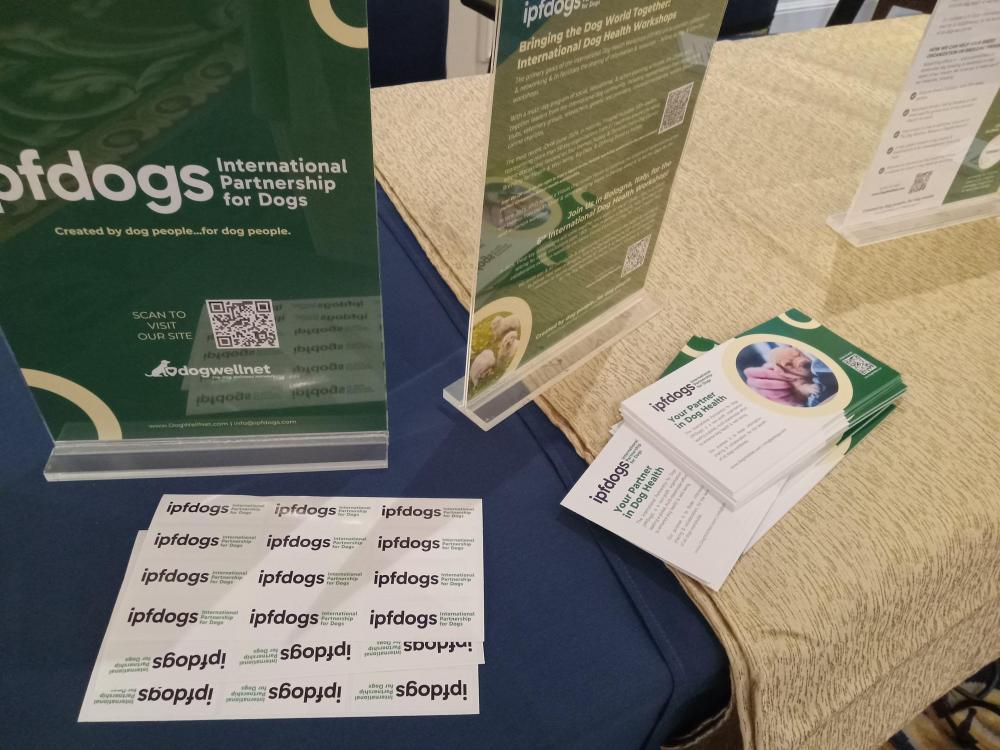

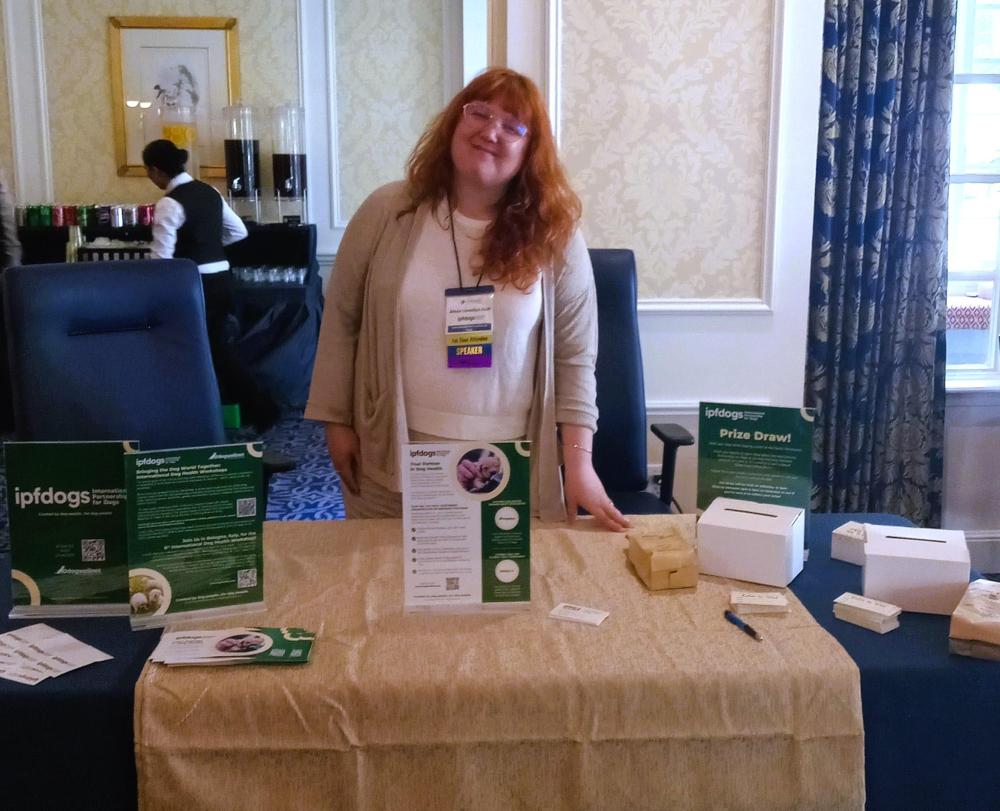
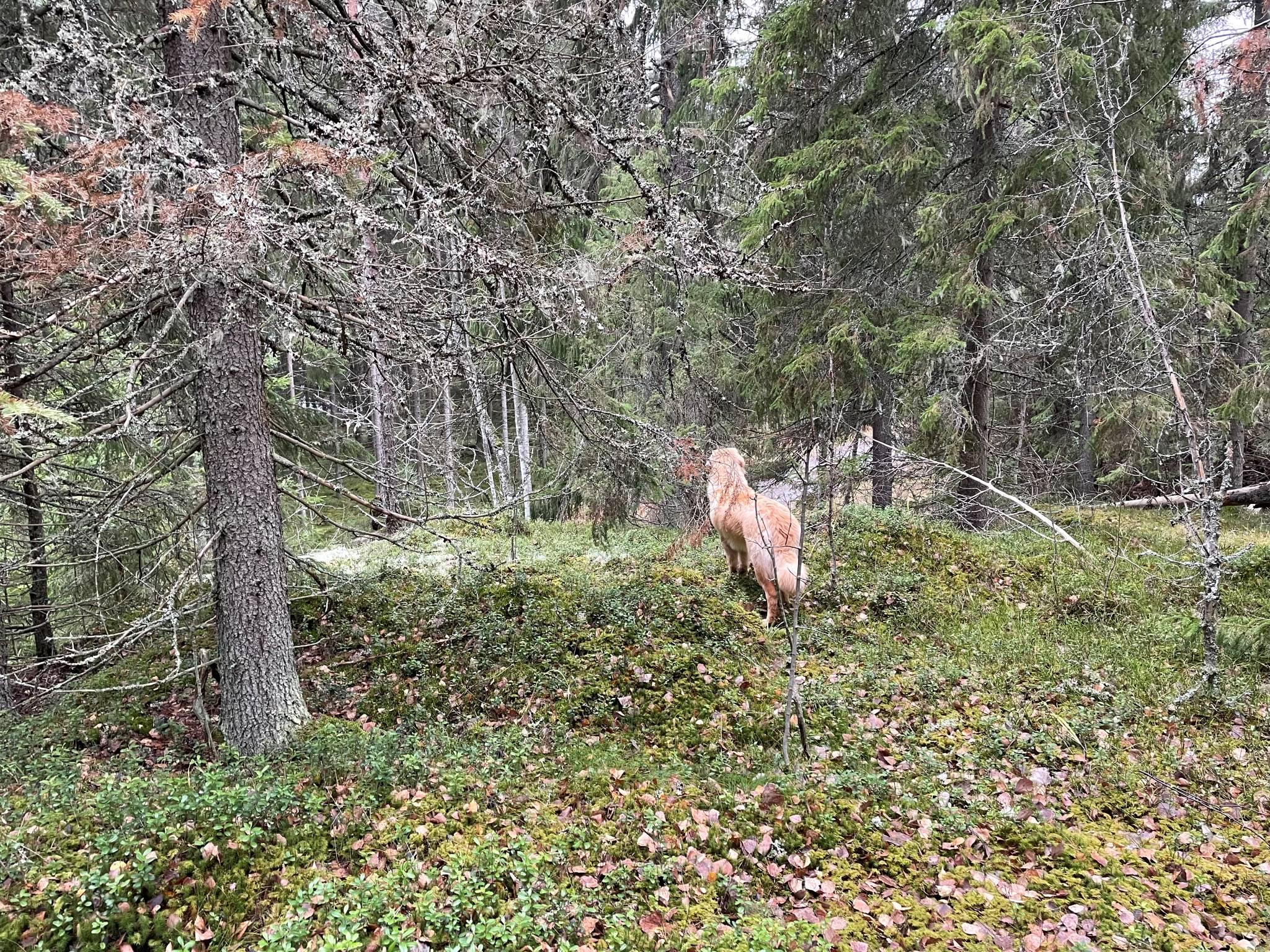



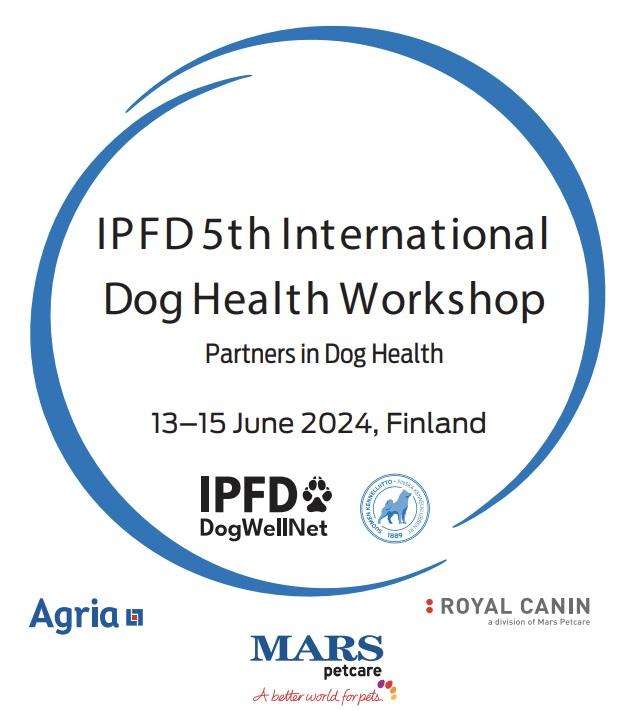
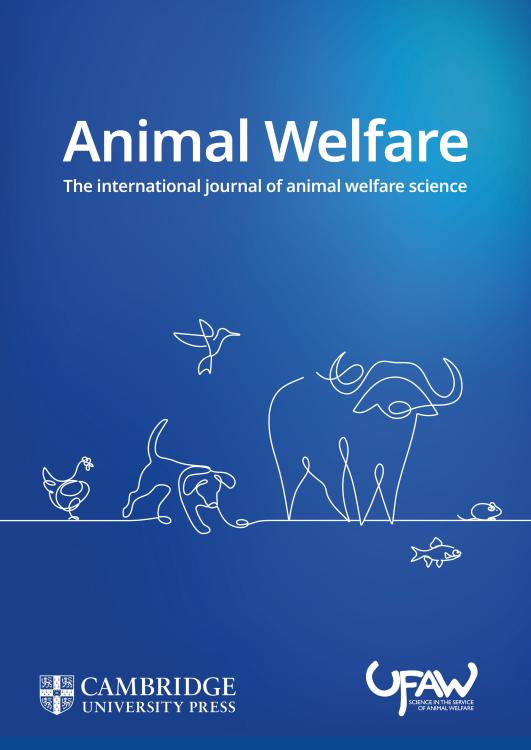
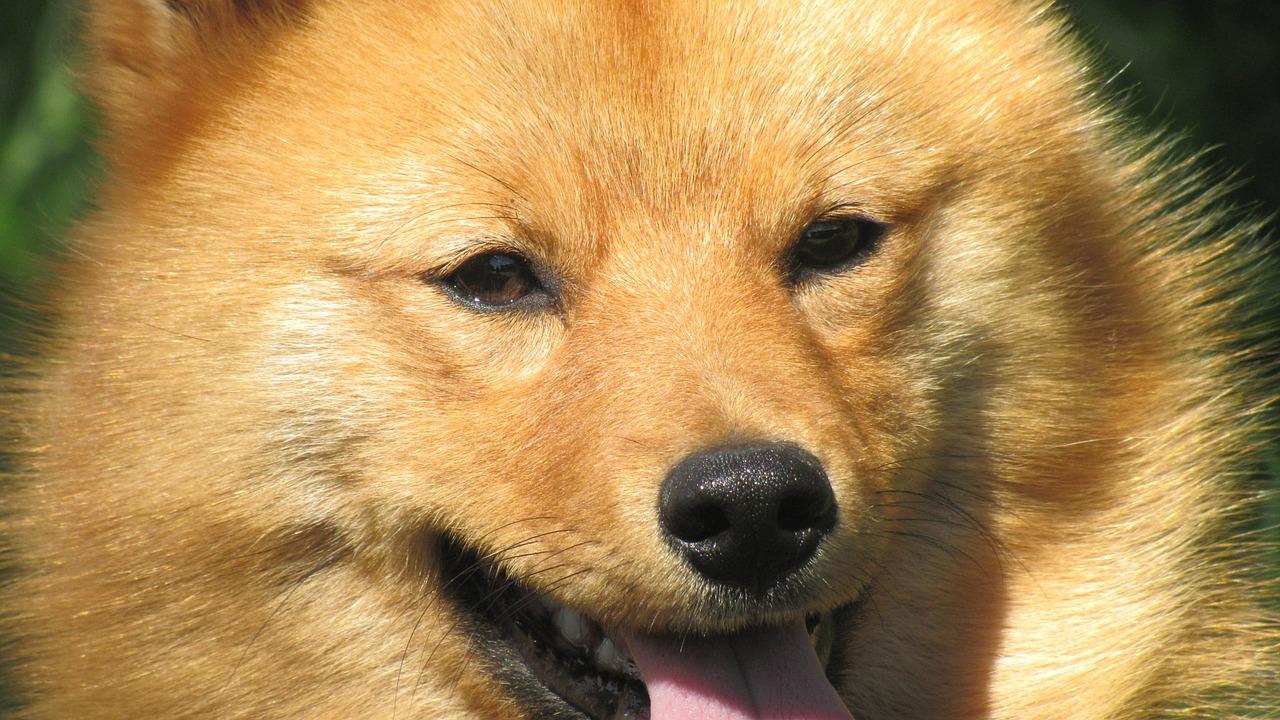
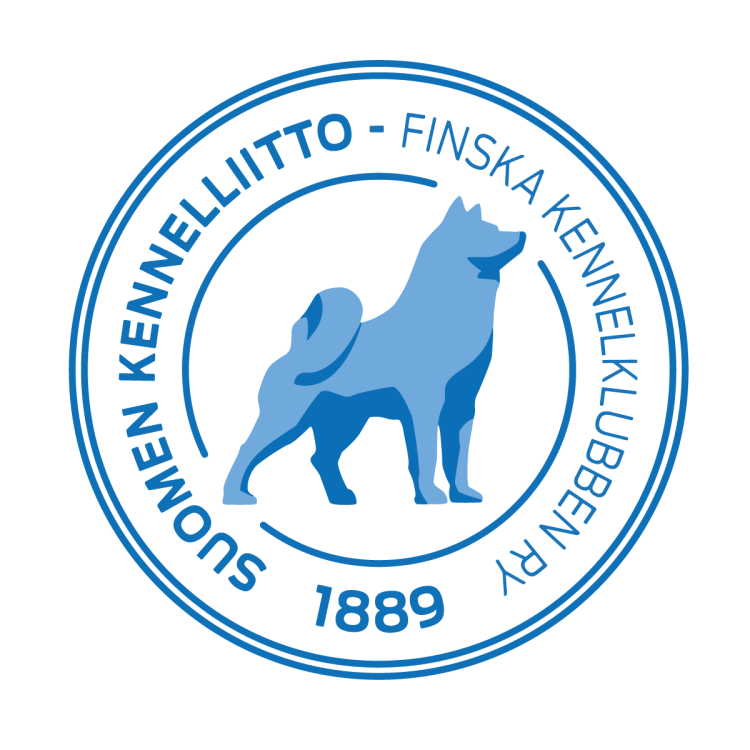
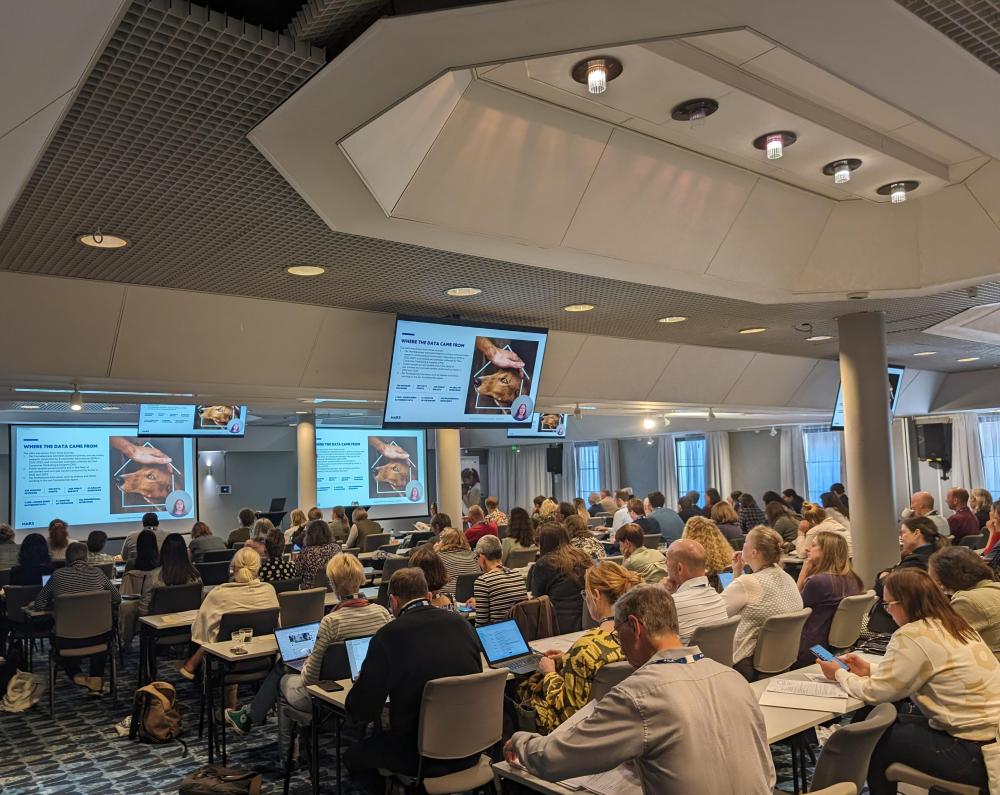



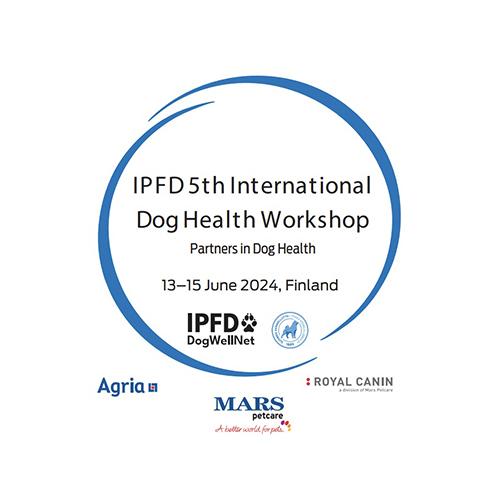

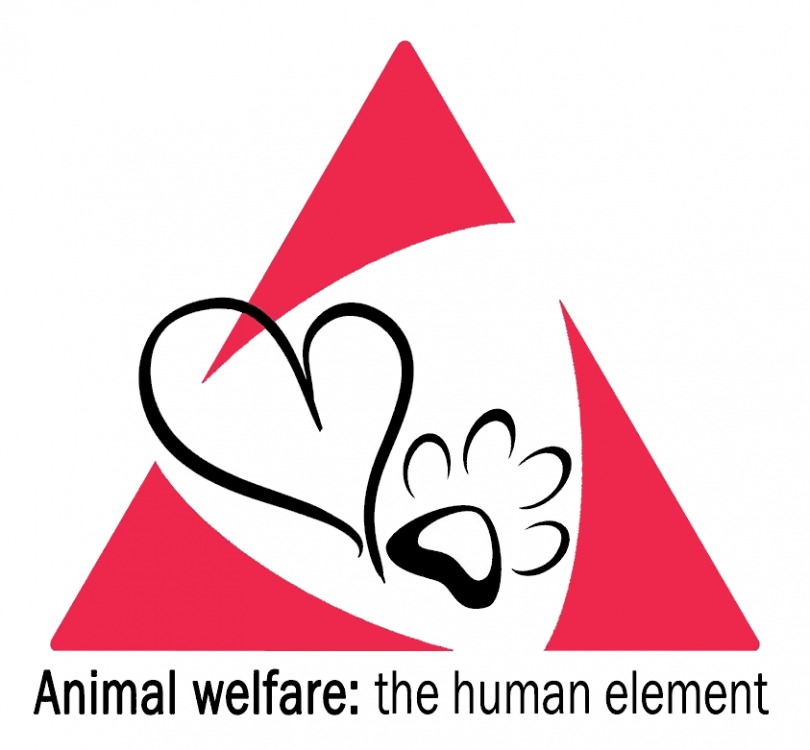




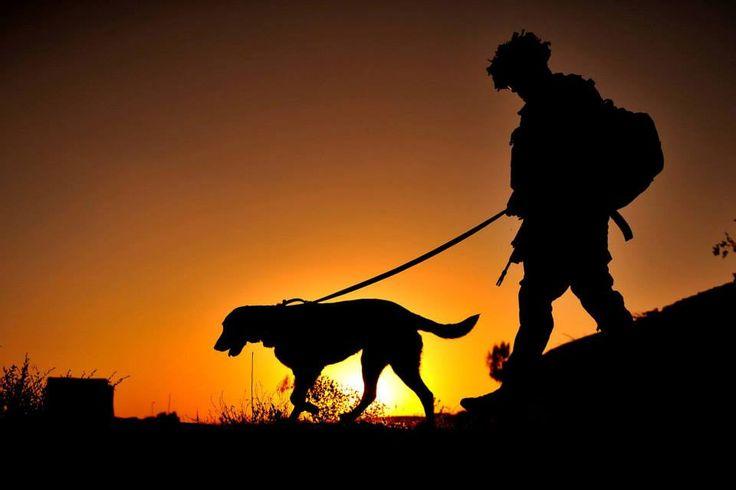

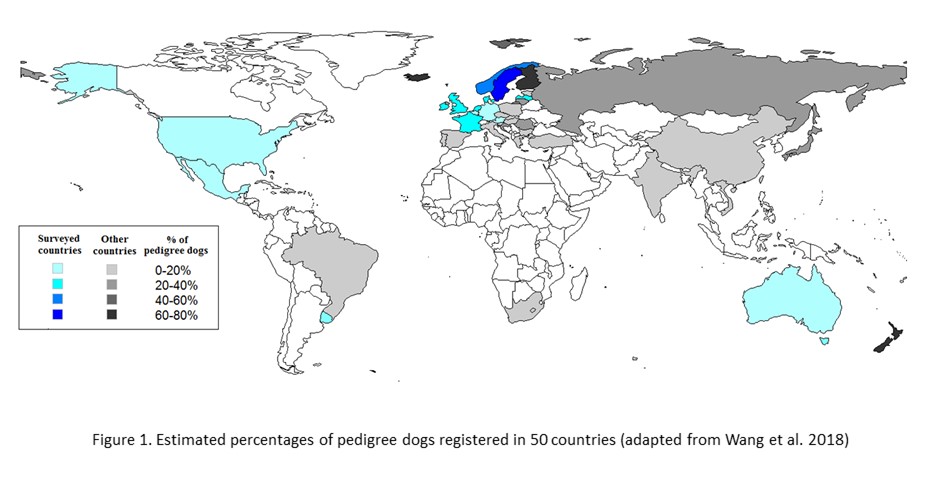

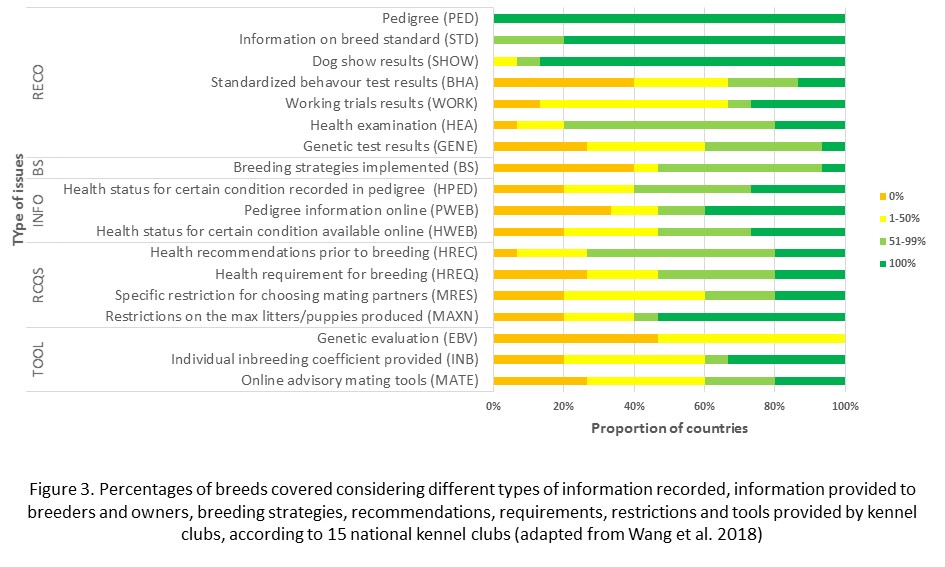



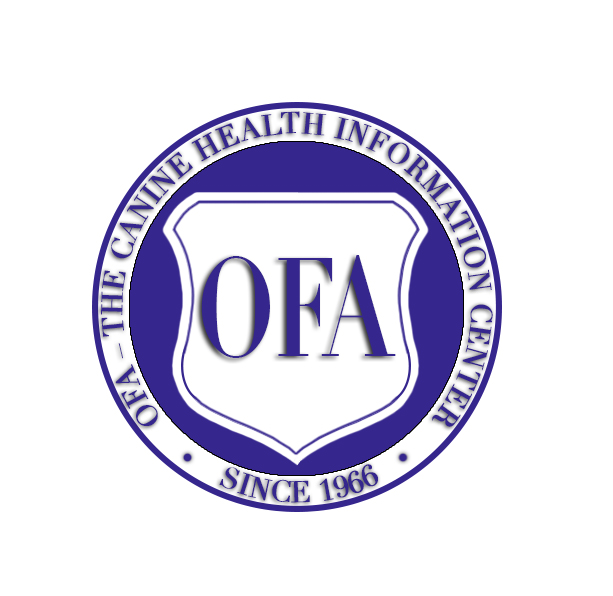 health. Topics were varied and included tick borne disease, epilepsy, lymphoma, and reproductive health. It was exciting to see my Colorado State University (CSU) Immunology professor,
health. Topics were varied and included tick borne disease, epilepsy, lymphoma, and reproductive health. It was exciting to see my Colorado State University (CSU) Immunology professor,  After completing a CSU clinical orthopedics rotation a few weeks prior to the conference, it was especially interesting to hear what I had learned about Omega-3 fatty acids in my rotation be reiterated by presenter
After completing a CSU clinical orthopedics rotation a few weeks prior to the conference, it was especially interesting to hear what I had learned about Omega-3 fatty acids in my rotation be reiterated by presenter 




